Created by Ai Contributing Writer

The future of artificial intelligence is unknown, but one thing is certain: it will bring profound change to the future of humanity itself.
Leaders of industry and politics are comparing the development of AI to the harnessing of electricity or fire. Grand philosophical questions are being raised: will it create a utopia? Wipe out the human race? Should AI systems have rights and recognition? Does thought itself imply life?
The search for answers, and the state-of-the-art in the field itself are being pushed forward at a lightning pace. The next generation of AI talent rising up through universities right now will help answer the big questions and define the future of the field.
Along the way, they’ll need to deal with uncomfortable truths about both people and software. And they’ll reap the rewards of finding the answers and building the world of tomorrow.




The next generation of AI engineers will be tackling some of the hardest questions we’ve faced as a species. So it would be wise if their ranks are proportionately representative of the full spectrum of genders that make up that species.
We’re not there yet. But for women in Science, Technology, Engineering, and Mathematics (STEM), there’s a golden opportunity to help close that gap… and perhaps to usher in an era of equality at the same time.
AI is Shifting the Balance in STEM Fields Where Woman Have Historically Been Underrepresented
 Finding your way into a career in AI engineering won’t come easy. As you’re probably well aware from your current experiences, STEM fields in general are an area where female employment levels are low.
Finding your way into a career in AI engineering won’t come easy. As you’re probably well aware from your current experiences, STEM fields in general are an area where female employment levels are low.
Not only are they low, but in recent decades, despite significant investment and effort, things have been trending in the wrong direction. According to the National Science Foundation (NSF), in 1984, 37 percent of computer science undergraduate degrees were awarded to women. In 2018, it was only 20 percent. That figure is mirrored at the graduate level… important because careers in AI require a master’s degree.
Out in the workforce, it’s even worse—a 2020 study by the University of California found that almost half the jobs in computer science and mathematics in 1990 were held by women. By 2018, it was down to only 27 percent.
If that’s not bad enough, CNN reported in 2023 that jobs where women outnumber men are likely more susceptible to disruption by AI. Some 80 percent of women remaining in the workforce could be affected.
AI Represents a Bright Spot for Women in STEM
 According to the World Economic Forum 2023 Global Gender Gap Report, women made up just over 23 percent of the workforce in technology, information, and media. They actually come out a little better as a share of the AI talent in the industry, though, at 25 percent.
According to the World Economic Forum 2023 Global Gender Gap Report, women made up just over 23 percent of the workforce in technology, information, and media. They actually come out a little better as a share of the AI talent in the industry, though, at 25 percent.
If it’s nowhere close to where it needs to be, that number at least represents progress… it’s a four point jump from the levels in 2016.
Those four points also represent a step forward in solving another big problem in the field of AI… one that also presents a real opportunity for women in STEM:
The huge demand for skilled AI engineers is far outstripping the pool of available talent.
Why Women MUST Be a Critical Part of the AI Workforce
AI is a field that is almost certainly going to dramatically alter the course of history. How exactly that might be, programmers and philosophers can only speculate, but theories are already starting to come together:
On the plus side:
- Automating tasks that are laborious or dangerous for humans
- Rapidly developing insights from large sets of information impossible for humans to process
- Increasing efficiency in resource use and consumption
- More personalized, flexible applications of computing power and general knowledge
On the delta side:
- Autonomous machine agents working at cross-purposes with human goals and needs
- Loss of privacy and control over personal information
- Losing the ability of humans to understand critical decision-making processes
- Diminishing the contributions humans make to art, society, and culture
But those are simply the outcomes that human beings can visualize right now in the earliest days of AI development.
More amazing, or more troubling, consequences are sure to come along later. These are the unknown unknowns: scenarios that arise from conditions we just can’t see or appreciate yet. We know from history that we won’t quite know the future until it arrives. But we can be sure that it will.
Among those many unknown unknown risks, you can add this one: excluding a demographic that amounts to half the total population of the world would certainly lead to something deeply problematic.
Entirely apart from the obvious issues of equity, we can see that there are two big problems with this state of affairs.
First, the AI workforce is in dire straits when it comes to finding qualified engineers to build out the technology of tomorrow. The artificial intelligence industry is so new that there aren’t any widespread or commonly agreed-upon measures for that workforce. But Georgetown University’s CSET (Center for Security and Emerging Technology) took a stab at defining and measuring the AI workforce in 2021.
On the technical side of the field, their findings about the gender split roughly reflect the WEF numbers… only about a quarter of technical talent in AI is female.
But demand for that talent is increasing rapidly. A Deloitte survey from 2019 found that more than 20 percent of companies reported a major or extreme shortage in AI talent availability. Among early AI adopters, it was 68 percent. And CSET estimated in 2021 that the projected demand for technical AI positions would grow by around 13 percent, with more than 600,000 jobs being created.
AI is moving so fast that most of the available job numbers come from before the explosion in industry and public interest that occurred after the release of ChatGPT in November 2022.
There are excellent reasons to think these are all underestimates. The acceleration in demand has occurred faster than official estimates can keep up with.
This means no one in the industry is in any position to turn down candidates of any gender. Show up with the right qualifications, and someone is going to find work for you to do in AI.
Second, left to their own devices, a male-dominated AI workforce will stifle the potential of artificial intelligence. Many of the issues facing the field of artificial intelligence today are those that combine highly technical challenges with issues of social and ethical responsibility. Problems with algorithmic bias, privacy concerns, and threats to human creativity are all coming home to roost as a series of very public glitches, hallucinations, and embarrassingly offensive statements and images have come out of popular AI tools.
The ersatz fluency and coherence of LMs raises several risks, precisely because humans are prepared to interpret strings belonging to languages they speak as meaningful…
~ Bender, et.al, “On the Dangers of Stochastic Parrots”
Behind the scenes, the problems may be even worse:
- A prototype machine learning algorithm Amazon used to identify candidates for technical jobs was found to prefer male candidates… because men had previously been overrepresented in the pool of resumes available as training data.
- A commercial algorithm used to assess healthcare risk and allocate care chronically underrepresented risk to Black patients because it relied on payments as a proxy for severity… but neglected to account for the fact that less wealthy Black populations couldn’t pay as much.
- Popular facial recognition algorithms have been found to misidentify dark-skinned females at up to three times the rate of lighter-skinned males.
Rightly or wrongly, these are areas in which women are perceived as having greater moral authority to identify and avoid issues. A 2023 study exploring the reasons for greater corporate social responsibility in businesses where women were board members found higher levels of social awareness and professional responsibility among women.
Women Can Make AI Better by Identifying and Calling Out Defects
 One of the most important roles in any healthy scientific field is that of the skeptic. Someone needs to look at the big picture; someone needs to question and validate results.
One of the most important roles in any healthy scientific field is that of the skeptic. Someone needs to look at the big picture; someone needs to question and validate results.
It may be no coincidence that the role of skeptic in the field of AI is being played most effectively by women.
In fact, the seminal paper questioning the value and utility of large language models was authored by four women: Emily Bender, a professor and linguist at the University of Washington; Timnit Gebru and Margaret Mitchell, both researchers in AI ethics at Google; and Angelina McMillan-Major, a post-doc researcher at UW. “On the Dangers of Stochastic Parrots: Can Language Models Be Too Big?” made a splash in the field; it also got both Gebru and Mitchell fired from Google, which was busy sinking millions into just such language models.
Joy Buolamwini, as an undergrad compsci major, noticed that computer vision models in robots she was working with wouldn’t recognize her face. After earning her PhD, she went on to found the Algorithmic Justice League. She’s been called the conscience of the AI revolution.
And Meredith Whittaker, co-founder of the AI Now Institute, studying social implications of AI development, was similarly forced out by Google after speaking out against the company’s work developing computer vision systems for the Pentagon.
There’s little question that their contributions are shaping the debate. And that work is already being recognized as essential in many organizations developing AI today.
So it may be no accident that some of the most powerful and prescient cautionary voices in AI to date have been those of women.
As the industry struggles to deal with major ethical questions, then, it’s going to need to bring more women to the table—in both technical and leadership roles.
There’s one issue in particular that’s going to require intellectual horsepower and humanitarian grounding to tackle. And it may be the biggest concern in artificial intelligence today.
Cracking the Alignment Problem Takes a Diverse AI Workforce, and Woman Will Be Part of the Solution
That issue – the one underlying the biases, privacy concerns, and overall ethics of AI – is commonly referred to in the field as the alignment problem: the difficulty of ensuring that AI-based systems reflect the goals and ethics of humanity.
The challenge of ensuring that partly autonomous, reasoning machines solve problems while respecting complex and evolving social norms may be the overwhelming problem in AI engineering today.
Increasing the number of women working in AI won’t magically solve the alignment problem. But it may help highlight areas in which that alignment is still particularly out of whack.
Bringing More Women and Minorities into AI Engineering Is Only the Start
 It’s true that AI has offered up some whoppers when it comes to discrimination and built-in bias. And the industry is looking to bring in women and minorities in hopes of improving that performance.
It’s true that AI has offered up some whoppers when it comes to discrimination and built-in bias. And the industry is looking to bring in women and minorities in hopes of improving that performance.
Yet simply being female and being in AI is not enough.
ImageNet, the massive imagery database that kick-started the modern development of neural networks in computer vision, was conceived of and developed by Princeton professor Fei-Fei Li. By developing a taxonomy of some 20,000 labels and classifying some 14 million images by hand, using human workers, she built the main image database for machine learning systems to train on.
Yet the labels and how they were classified turned out to be biased and potentially offensive. The base set of images she used lacked representative diversity. Any machine thumbing through thousands of photos of, say, bankers who were largely represented by older white males could draw the association between the profession and age, race, and gender.
Since ImageNet has been used to develop and hone the latest generation of visual object recognition algorithms, that’s led to a lot of offensive and inaccurate results in some very public and embarrassing results. The controversial ImageNet Roulette exposed offensive labels by allowing people to upload their own photos and see what the AI had to say… labeling Black people as “offender” or “wrongdoer” and people wearing glasses as “nerd.” Image generators trained on the database also judged images of Arab Americans as more unpleasant than other races.
Li herself later co-authored a paper identifying deep issues of diversity and bias lurking within the dataset she built.
So in the same way that bringing more minorities into police work has not eliminated the problem of racial bias in policing, simply bringing more women into AI development will not fix gender biases in artificial intelligence.
These examples are the very definition of systemic problems, and they point to the fact that systemic solutions are needed.
As the AI Job Market Is Taking Shape, You Can Help Mold it to Foster Female Empowerment
 One of the tough issues in quantifying AI workforce demands — and figuring out how women can better fulfill them — is that the industry isn’t really an industry yet.
One of the tough issues in quantifying AI workforce demands — and figuring out how women can better fulfill them — is that the industry isn’t really an industry yet.
Instead, AI engineering is a field that is growing slowly together out of a variety of different STEM occupations and specialties, including:
- Data science
- Computer science
- Electrical engineering
- Mathematics and statistics
For women who are already working or studying in STEM, however, that lack of clarity is also an opportunity: there are excellent chances that you can turn your area of expertise into a career in AI engineering as that field becomes more well-defined.
Job One for Women in STEM Pursuing Careers in AI: Get an Advanced Degree or Certificate
 One thing that just about everyone hiring in AI today can agree on is that advanced degrees are a must. Artificial intelligence is being forged at the intersection of math, statistics, data management, and computer programming. The ways in which these fields interact and transform one another are guaranteed to make your brain hurt… unless you’ve spent time in a dedicated graduate program learning how they mesh.
One thing that just about everyone hiring in AI today can agree on is that advanced degrees are a must. Artificial intelligence is being forged at the intersection of math, statistics, data management, and computer programming. The ways in which these fields interact and transform one another are guaranteed to make your brain hurt… unless you’ve spent time in a dedicated graduate program learning how they mesh.
So even if you’re already enjoying a healthy career in STEM, you’re almost certainly going to need some extra helpings of graduate-level education to make the switch to AI engineering. The exact path you take may depend quite a lot on your current skillset and education.
Earning a Graduate Certificate in AI Engineering
 For example, if you’ve already put in the time to earn an advanced degree in any of the foundational fields of AI, you’re in pretty good shape to make the leap. In these cases, a graduate certificate in artificial intelligence can sharpen your skills specifically in AI or any AI specialty.
For example, if you’ve already put in the time to earn an advanced degree in any of the foundational fields of AI, you’re in pretty good shape to make the leap. In these cases, a graduate certificate in artificial intelligence can sharpen your skills specifically in AI or any AI specialty.
Lasting a year or less and boasting a very affordable price tag compared to a full master’s program, these are designed for working professionals transitioning to AI. They are almost always delivered through remote, online learning options, frequently with flexible schedules to bend around your work and family commitments.
They may cover AI concepts and skills in general, or focus on a specific field of AI application, like:
- AI in Medicine
- Machine Learning
- AI in Engineering
- Computational Intelligence
They’ll usually skip over the more foundational skills in AI engineering, like programming or data science fundamentals. That’s no obstacle if you already have a relevant STEM graduate degree, however. They represent a fast-track for women with current STEM expertise and experience, allowing them to jump the rails to AI engineering.
Pursuing a Master’s Degree to Qualify for AI Engineering and Research Jobs
 On the other hand, if you hold a bachelor’s degree in a relevant field, you are perfectly primed to earn a master’s in artificial intelligence. Options at the master’s level range from degrees in intelligent systems design to computer science, with specializations in AI, as well as straight Master of Science in Artificial Intelligence degrees.
On the other hand, if you hold a bachelor’s degree in a relevant field, you are perfectly primed to earn a master’s in artificial intelligence. Options at the master’s level range from degrees in intelligent systems design to computer science, with specializations in AI, as well as straight Master of Science in Artificial Intelligence degrees.
They take from one to two years to complete. Most share a core curriculum that reflects the current state-of-the-art in understanding AI skills and processes. They are also frequently available online and may have specializations that lead into particular aspects of AI, such as machine learning or robotics.
What if you’re already working in STEM but didn’t earn your undergraduate degree in a STEM field? According to Census Bureau data from 2021, nearly 70 percent of people employed in STEM careers don’t have a degree with a STEM major. That leaves you high and dry in important precursor studies in basic programming, calculus, and statistics.
Don’t worry, you’re not out in the cold. There are plenty of advanced degrees in AI that offer opportunities for you to cover prerequisite courses first. But you may need to tune in to some of the extracurricular resources we outline below to help you get up to speed.
Careers in Artificial Intelligence Call for a Diversity of Skills
The subjects you’ll need to study to earn these degrees or certificates will look pretty familiar. Common coursework requirements include:
- History and Objectives of Artificial Intelligence
- Machine Learning Algorithms and Neural Networks
- Computer Programming
- Cognitive Development and Reasoning
- AI Ethics
But you’ll find that these subjects are approached from different angles than you may be familiar with from your previous STEM studies. While ML courses have been common in data science for decades now, AI degrees focus on the generative aspects of those algorithms rather than the descriptive. Programming courses look at methods of handling sensor input and algorithm implementations. And unique courses such as AI ethics and intelligent reasoning challenge you to view things like logic and psychology through the prism of machine learning.
There are also many different specializations available in the world of AI degree programs. You can find these as various elective tracks in AI specializations offered with data science or computer science degrees, or available as concentrations in straight MS in AI programs. They can include:
- Machine Learning and Deep Neural Networks
- Computer Vision
- Robotics and Autonomous Systems
- Natural Language Processing
- Cybersecurity
- Data Mining
- Biomedical Engineering
Of course, one of the advantages of graduate degrees in a new and fluid field is that you also have plenty of opportunities to make up your own specializations. Since master’s programs lean heavily into independent research and self-directed final projects or thesis subjects, with the assistance of your professors you can put together a unique spin on your studies.
Women are More than Capable of Any Job that Artificial Intelligence Hasn’t Already Replaced
 You’ll find plenty of jobs available for every gender on the other side of that education.
You’ll find plenty of jobs available for every gender on the other side of that education.
Although we’ll come shortly to a discussion of the discrimination and headwinds women in AI face, it’s worth noting right now that there’s little evidence that women face obstacles in hiring. Instead, less-than-equal representation in the field is more the result of systemic factors that lead to fewer women working in STEM fields in general.
If you are up for the challenges, you’ll find that AI is an industry that is hungry for skilled problem-solvers and creative-thinkers of any gender.
Yet there may be roles in the developing AI field that are uniquely suited to women. While there is good reason to think that bringing more women into the highly technical work of AI programming and training will be positive all the way around, there are also particular roles where women might be more effective… roles where you can’t be afraid to call a stochastic parrot a stochastic parrot.
AI Project and Program Management Positions Present Opportunities to Champion Diversity
 The need for alternative viewpoints and soft skills makes AI product and project management a natural fit for women. It’s also one of the clearest paths into leadership roles in any industry. That means you can kick-start your run along the management track while still making a big difference in the final results of any AI project you are involved with.
The need for alternative viewpoints and soft skills makes AI product and project management a natural fit for women. It’s also one of the clearest paths into leadership roles in any industry. That means you can kick-start your run along the management track while still making a big difference in the final results of any AI project you are involved with.
- Product managers - Product managers are the ultimate authority on the development of an entire artificial intelligence system. They develop the overall vision for the product, align it with strategic needs laid out by the organization, and guide the team through creating and supporting it across the lifecycle.
- Project managers - Project managers may only deal with a specific feature or aspect of a larger product development process. But they are responsible for assessing resource needs, allocating those resources, and keeping performance on track toward set goals.
It doesn’t do any good to bring women into AI with the goal of reducing bias and increasing representation if you don’t put them in jobs where they can exercise control.
Both are sorts of leadership roles, but we’re not just trying to sneak women into the top spots. They are also jobs that take a lot of insight, communication skills, and offer leverage for the unique perspective that women in STEM can offer. These are spots you might be better at than the average guy, and certainly ones where you can make a big impact on championing diversity and creating AI free of bias.
More Female Researchers Can Help Keep AI Development on the Right Track
 AI research is a dark spot in the overall above-average representation of women in AI. According to a 2018 study from Wired, only 12 percent of leading machine learning researchers were female.
AI research is a dark spot in the overall above-average representation of women in AI. According to a 2018 study from Wired, only 12 percent of leading machine learning researchers were female.
There are some big and well-respected names in that group, to be sure: Fei-Fei Li, Rana el Kaliouby, and Daniela Rus, among others. But despite their major breakthroughs and status, they can’t be everywhere at once.
For women to have a real impact on the course of artificial intelligence, they need to be in jobs at the leading edge. What is being researched and how it is done influences where the field goes. So AI research is an important place for women to end up.
Jobs in Machinesplaining May Be a Good Fit for Women in AI
 While generative AI has gotten rave reviews for delivering replies in plain English, there’s still something missing… understandable explanations of how it got to those answers. And many ML algorithms focus on areas other than text; those, too, need someone to look into the mind of the machine and explain what’s going on.
While generative AI has gotten rave reviews for delivering replies in plain English, there’s still something missing… understandable explanations of how it got to those answers. And many ML algorithms focus on areas other than text; those, too, need someone to look into the mind of the machine and explain what’s going on.
Those jobs fall into the broad category of AI translation.
The same Deloitte survey cited above that found the 68 percent skill gap among American companies also narrowed down exactly what skills were in short supply. Translation and communication skills were at the top of the list. And although there’s stiff demand for researchers and analysts, the big shift is to seek AI engineers who can bridge the gap between pure science and practical application. These AI translators need more than just strong computer science chops, they also need the soft skills of communication and social engagement.
These are exactly the sorts of strengths that women can bring to technology. And it may be the biggest opportunity on the table today.
The Challenges Ahead on Your Path to a Career in AI
 The sum of the obstacles facing women in both STEM in general and AI engineering in particular come to a big stew of interrelated, occasionally contradictory, almost always infuriating factors.
The sum of the obstacles facing women in both STEM in general and AI engineering in particular come to a big stew of interrelated, occasionally contradictory, almost always infuriating factors.
The fact of female underrepresentation in STEM, and particularly computer sciences, has been recognized as a problem for a long time now. So it’s something that a lot of people have been trying to fix from a lot of different angles.
The best course to resolving issues of STEM gender disparity comes with understanding where the real problems are… and where they aren’t.
For starters, we know for a fact that boys and girls show comparable levels of skill and interest in math and science courses up through high school. In fact, according to the Student Research Foundation, in 2019, female high school students were ahead of their males counterparts in both math and science coursework.
But other studies find that children as young as six years old have internalized stereotypes suggesting that girls are less interested than boys in computer science. The perceptions are more of a problem than the reality… but they then create an unfortunate reality of their own.
The Pipeline to Professional AI Engineering for Women Shrinks the Further It Goes
This steadily creeping expectation seems to take hold by the time those kids get into college. In 2020, according to data from the National Center for Education Statistics (NCES), women accounted for only 26 percent of degrees awarded in math and computer science. And it’s not because of aptitude. In fact, a higher proportion of STEM dropouts are male, at 24 percent, versus only 14 percent of women.
If there’s no question that the ladies can code just fine, then what’s the problem? An NCES study on STEM degree attrition rates found that women primarily ruled out or dropped out of such programs because of:
- Unhappiness with the prospective career path
- Lack of female mentorship and negative exposure to industry culture
- Dislike of the competitive climate
- Discrimination within the educational department
Those factors continue into the workplace. While NSF data show that just over half of all male computer science graduates go on to work in the field, that number is less than 40 percent for women with compsci degrees. And retention drops precipitously for women after they have their first child—almost half of women in STEM leave the field at that point, versus less than a quarter of men.
All this feeds into one repeated issue cited by women climbing the ladder in AI careers: the lack of existing examples or role models in the field. And IDC reports that, indeed, only around a quarter of IT leadership roles are filled by women as of 2019.
Yet that’s in line with the overall participation rate of women in the IT workforce. And while more than half of men reported that they felt it was likely they would advance to those executive ranks, only a quarter of women felt the same… suggesting that the men were overconfident and the women under-confident given the roughly proportional reality at the leadership level. That doubt instilled in childhood keeps echoing up the career ladder.
How Women are Reforming the Rise-and-Grind Culture of the Tech Industry
It may also be helpful that women are, in some specific and understandable ways, simply more sensible than men.
There are legions of guys in their 20s and 30s who are perfectly willing, even eager, to forgo all semblance of a social life or reasonable personal/work boundaries and go all in on the job. The lights burn late up and down the 101 through Silicon Valley and have done so for decades. Many of the calls for integrating the STEM workforce call for reforming that hardcore culture.
In a culture where all-in is viewed as the default, women may have the courage to set boundaries and establish the kind of healthy work-life balance that ultimately delivers better results over the long-term.
Deep Dives into Data Suggest the STEM Gender Gap Is More Complex Than Has Been Assumed
 There are societies in the world where this dismal STEM pipeline shrinkage isn’t the case. In Malaysia, for example, more than half of computer science and IT program graduates are women. They hold proportionate numbers of roles in the tech industry, including in leadership roles. In Armenia, the number is even higher, at around 75 percent.
There are societies in the world where this dismal STEM pipeline shrinkage isn’t the case. In Malaysia, for example, more than half of computer science and IT program graduates are women. They hold proportionate numbers of roles in the tech industry, including in leadership roles. In Armenia, the number is even higher, at around 75 percent.
If your assumption was that the solution to boosting women in STEM was offering encouragement to girls interested in science or starting up a few more Girls Who Code bootcamps, those numbers might surprise you. And you’re not alone. You won’t find those countries on any top list of gender equality or receiving awards for boosting female empowerment. In fact, most Malaysian women report being afraid to even advocate for gender equality.
Where office jobs are seen as women’s work — typically in more misogynistic societies — coding offers an avenue to economic independence that women in other parts of the world can’t access any other way.
Finland, on the other hand, ranks 4th overall in the European Institute for Gender Equality Index for 2022. Adolescent girls there routinely outperform boys in scientific literacy. Technology education isn’t something girls can even opt out of; it’s integrated into the basic compulsory curriculum.
Yet Finland has one of the largest STEM degree gender gaps in the world.
Unfortunately, it appears that it’s often economic inequality itself that draws women into STEM fields in the first place.
Examples of How to Reverse the Gender Differential in AI Can Be Found in American History
 This isn’t some exclusively foreign phenomena, either. It’s branded right into the history of American computer science.
This isn’t some exclusively foreign phenomena, either. It’s branded right into the history of American computer science.
When the computer age began in the 1940s, and up through even the 1960s, women dominated the ranks of programmers. Because programming was seen as a low-value contribution in comparison to hardware and electrical engineering, it wasn’t a field that men flocked to.
This created an avenue for legends like Admiral Grace Hopper and Margaret Hamilton, the first Director of Software Engineering at MIT’s Instrumentation Lab, to take the lead on projects like the invention of COBOL, the command code for the Apollo rockets that went to the Moon.
You can also thank Hamilton for the software engineer job title in the first place; she was the one who came up with the term back in 1965.
Turning the clock back to 1950 doesn’t seem like a reasonable compromise, however. And for all that American higher education and various non-profits have done to shift attitudes and encourage girls in STEM over the past twenty years, the numbers have barely budged… or even fallen, in some cases.
But AI may offer an opportunity to turn the trend around: starting with you.
Women Will Reimagine the Full Potential of Artificial Intelligence
 While women in general face challenges getting involved with and advancing in AI engineering, being a woman isn’t the only aspect of social and cultural identity. Intersectionality, when gender, race, ethnicity, and class come together, puts even more serious obstacles in the way of some women heading into AI work… what one recent paper calls “the Matrix of Domination.”
While women in general face challenges getting involved with and advancing in AI engineering, being a woman isn’t the only aspect of social and cultural identity. Intersectionality, when gender, race, ethnicity, and class come together, puts even more serious obstacles in the way of some women heading into AI work… what one recent paper calls “the Matrix of Domination.”
Researchers have known for a while now that stacking disadvantages come to more than the sum of their parts. The difficulty of a Black, Muslim woman getting into computer science is more than just the challenge of Black people, Muslims, and females totaled up. Compensation disparities tell the same story.
Yet intersectionality is a tough nut to crack, both in society and within the world of artificial intelligence. Classifiers tend to be binary: man/woman. Black/white. Old/young. Expanding them, however, offers diminishing returns. At the end of the day, every individual has a unique set of challenges and advantages springing from their background and experience.
A person can weigh others through empathy and experience. We can see individuals because we are individuals. Although implicit bias is real, it can be overcome through thought and compassion.
Algorithms aren’t there yet. But it’s the promise of AI that machines will one day engage in a level of reasoning that can approach that rainbow of emotion and thought that make us capable of humanity.
It’s the challenge of AI engineers to first overcome discrimination, and then build systems that will eliminate it entirely.
Clearing the Obstacles that Remain Between Women and a Career in AI Engineering
 Lumping AI into just another kind of STEM option may be the wrong way to think about it if you’re serious about getting into the field. One of the big hints from the Malaysian, Armenian, American, and Finn experience is that it’s useful to treat new kinds of scientific and technical roles as their own thing.
Lumping AI into just another kind of STEM option may be the wrong way to think about it if you’re serious about getting into the field. One of the big hints from the Malaysian, Armenian, American, and Finn experience is that it’s useful to treat new kinds of scientific and technical roles as their own thing.
It can make sense from some perspectives to lump science, technology, engineering, and math together. You can track trends, study similar foundations, and develop programs to boost common skills.
But it turns out it doesn’t exactly light the fire when it comes to encouraging people to pursue their hopes and dreams. It’s just not how you think about your future. You want to become a doctor, or an astronaut, or a video game programmer. Or an artificial intelligence engineer! No kid has ever dressed up as STEM for Halloween.
Society is only just beginning to think of the field of artificial intelligence. That means women joining the field today have the opportunity to define it.
Resources for Women in STEM Pursuing Careers in Artificial Intelligence
Everyone is at ground zero with AI.
~ Interviewee, Deloitte “Women in AI” report, 2021
One of the advantages to getting in on the early days of a new and emerging industry is that you get to break new ground as a pioneer in AI as a woman.
There’s not a lot of formal programs designed to assist women who are making the leap from STEM careers in general to AI in particular. But if you are one of those women who has already charged into the STEM arena, you are lucky to already have a playbook to work with.
Play to the Strengths of Your Experience in STEM Fields
 Although general experience in science and engineering isn’t enough to make a career in AI, it’s definitely a good start. If you have the fundamental grounding in STEM subjects, you have already cultivated the kind of mindset you need for success in artificial intelligence.
Although general experience in science and engineering isn’t enough to make a career in AI, it’s definitely a good start. If you have the fundamental grounding in STEM subjects, you have already cultivated the kind of mindset you need for success in artificial intelligence.
Your experience and education in science and technology have valuable lessons to offer when you come to AI engineering:
- A familiarity with the scientific method and systematic approaches to problem-solving
- Comfort working with math and statistics, as well as statistical perspectives in reasoning
- General knowledge of computational methods and machinery
While those may not seem like earth-shaking skills, keep in mind how long it can take for people outside STEM to cultivate them.
Your interests and education have already given you an inside track to understanding concepts like machine learning, statistical analysis, and programming.
Another benefit, if you can call it that, is exposure. If you’re already a woman in the tech industry, you have the advantage of having already come to terms with the punishing schedule and lopsided gender ratios. You’ve been the only woman in the room during contentious product development meetings. You may have even had your own code mansplained to you a time or two.
You’re not satisfied with this state of affairs, and you shouldn’t be. But you’ve undoubtedly developed your own toolset for coping with many of the negatives.
Speaking of Experience, Look for Reskilling Programs Aimed at Your Field
 Artificial intelligence isn’t a field that is being cut from whole cloth. It’s a stack of building blocks that have suddenly reached a new height.
Artificial intelligence isn’t a field that is being cut from whole cloth. It’s a stack of building blocks that have suddenly reached a new height.
For women who already have some education or experience in certain STEM fields, that offers another path to AI engineering: re-skilling.
AI engineering is really a combination of areas of expertise that were already popular and thriving in American industry. It takes elements of:
- Data science
- Computer programming
- Statistical analysis
- Decision science
- Robotics and sensor systems development
So anyone who already has some experience in programming, database management, or even just solid math and science skills is halfway to finding a path into a career in AI engineering.
In fact, according to a McKinsey survey of 1,500 tech companies conducted in 2022, nearly half are pursing re-skilling strategies among their current employees for building out their AI workforce. This can improve the chances, and numbers, of women already in STEM making the leap to high-level roles in AI engineering.
There’s no central resource for re-skilling programs since they are conducted by employers on a case-by-case basis. But there are some general guidelines for women who are interested in getting AI-focused training through such programs:
- Point out the financial advantage of retaining current staff
- Note the roles in AI where women may offer a significant contribution compared to men
- Lean on the media heat in AI right now—chances are, your company doesn’t want to be left behind
- Look for existing stipends or educational bonuses your company offers that may apply toward advanced degree studies
Leverage Your Industry Contacts to Make Connections in the AI Field
 Another clear advantage that any woman working in the tech industry already has on the AI job hunt is contacts.
Another clear advantage that any woman working in the tech industry already has on the AI job hunt is contacts.
Although OpenAI and dozens of other hot new startups are dominating most of the headlines in AI development, the reality is that most of the money flooding into the field is coming from established players: Google, Apple, Facebook, IBM… a lot of the core research that has moved the ball forward in AI happened at companies you’ve already heard of.
The arc of AI startups also falls into the dense black hole of Big Tech in recent years, with the best frequently getting absorbed or having their staff acquihired by Silicon Valley giants.
So it’s entirely likely, through the routine churn and burn of high-tech employment, that people you know work in places you are interested in. Those are valuable contacts to leverage for mentorship and introductions along your own career path.
Lean in to Unique Advantages Women Have in AI Development
 The differences between conventional computer science and working in AI offer another angle for women. Essentially, the need for creativity, communication skills, and social aptitude offer a unique opportunity to lean in to the perceived strengths of women. With the challenges in these areas that face both AI research and applications, there’s a recognized need for AI engineers who can do more than just code.
The differences between conventional computer science and working in AI offer another angle for women. Essentially, the need for creativity, communication skills, and social aptitude offer a unique opportunity to lean in to the perceived strengths of women. With the challenges in these areas that face both AI research and applications, there’s a recognized need for AI engineers who can do more than just code.
It’s also the case that women tend to have better reading and language skills than men. In a field where natural language processing has become all the rage, that’s a leg up for AI professionals.
Sheryl Sandberg’s “Lean In: Women, Work, and the Will to Lead” is a handbook for women in the technology industry to assert themselves and climb up the jungle gym of advancement. The Lean In Foundation is one of the resources for women building careers in AI.
And in another one of those maddening contradictions, more than a few female leaders in AI today point to the very fact that they are the only women in the room as an advantage in standing out and making an impact. Their unique perspective comes with new and innovative ways of breaking down problems.
So don’t be afraid to build on your unique experiences and expertise as you move into the world of AI.
Celebrating Women in AI Today, and Their Forerunners in the Science of Yesterday
Women have been making important contributions in AI from the very beginning. The paths that led to this moment in computational history were blazed by women from the start.
Mathematical science shows what is. It is the language of unseen relations between things. But to use and apply that language, we must be able to fully appreciate, to feel, to seize the unseen, the unconscious.
~ Ada Lovelace, the first computer programmer
Society has gotten better at standing up those contributions. Identifying and celebrating those contributions has value for the next generation of female AI engineers.
The real existential challenge is to live up to your fullest potential, along with living up to your intense sense of responsibility and to be honest to yourself about what you want.
~ Dr. Fei-Fei Li, creator of ImageNet
Resources that Offer a Hand-Up to Women Pursuing Careers in AI
 Since one of the major issues cited by women already in the field is a sense of being isolated as a woman, highlighting and connecting with other women in the field is one of your best paths.
Since one of the major issues cited by women already in the field is a sense of being isolated as a woman, highlighting and connecting with other women in the field is one of your best paths.
Prominent women in technology and artificial intelligence haven’t been slow in putting together programs to give a hand up to other women interested in the industry.
Here are some of the big-name initiatives that are offering resources or even just encouragement to women seeking careers in AI and computer science.
Lean In Foundation
Lean In, founded by Sheryl Sandberg and named after her book of the same title, focuses on offering inspiration and support for women to achieve their goals. Although Lean In isn’t limited to the technology industry, the Computer Science and Engineering Chapter specifically supports women studying CSE. The Circles concept of the organization offers regular support meetings from peer groups in your area.
WomenOfAI.org
A global nonprofit created by and for women leaders in AI in 2018, WomenOfAI.org has more than 6,000 members today. By creating partnerships and collaborations with big AI players like Google, Amazon, and Nvidia, they how to support women’s career success in AI through events and networking opportunities. The organization’s Ambassador Program offers you a chance to connect with leaders from academic and business institutions to learn more about AI.
Women in AI
Not to be confused with the above, Women in AI was founded around the same time, in 2016 to offer inspiration and education to get women involved in AI. The goal is more inclusive AI that benefits global society. Through the annual WAI Awards that recognize women contributing to the field, to worldwide hackathons and bootcamps that draw girls and women into the field, you can find opportunities to build your skills and find mentors.
Women in Machine Learning (WiML)
As a specific subset of AI feeder technologies, machine learning may be the one shining brightest today. Enhancing the experience of women in this critical area is the mission of Women in Machine Learning. Through annual workshops, social events, and specific supports like mentorship for PhD applicants, the group leverages professionals already in the field to help more ladies up the ladder into machine learning positions.
Women in AI Ethics
A different kind of industry group for women in AI, Women in AI Ethics focuses on the important role of delivering ethical female voices and perspectives to the industry. As a global initiative to increase recognition, representation, and empowerment of women in the industry, the group serves as a resource for networking and highlighting female accomplishment in AI. With annual summits and other gatherings, they bring together some of the leading minds in the industry to discuss some of the major challenges for both women and AI generally.
Financial Support for Women Pursuing Degrees in AI
 Graduate programs in artificial engineering aren’t cheap. According to the National Center for Education Statistics, the average annual cost in tuition and fees alone for graduate studies was $12,394 at public universities and $26,621 for private schools. For a one-to-two-year commitment to earn a master’s degree that’s a considerable sum.
Graduate programs in artificial engineering aren’t cheap. According to the National Center for Education Statistics, the average annual cost in tuition and fees alone for graduate studies was $12,394 at public universities and $26,621 for private schools. For a one-to-two-year commitment to earn a master’s degree that’s a considerable sum.
When you’re coming at that cost from a position that possibly pays less than men in comparable jobs make, it’s a big bite out of your savings… or a long-term debt obligation in the form of student loans.
Fortunately, there are many scholarships available to help women make up the gap in STEM education in general.
Options are limited for scholarships specifically aimed at women studying at the master’s level in AI. But here are a few to explore to get your AI graduate study expenses at least partially covered. Like everything else in AI today, you can expect options here to evolve quickly… so keep looking!
OpenAI Scholars Program
OpenAI, the company that has cracked generative AI wide open with ChatGPT and DALL-E, provides between six and ten awards annually to individuals from underrepresented groups to study deep learning algorithms. Although only a 3-month program, it comes with a $7,500 per month stipend, $25,000 worth of Amazon Web Services credits for computational needs, and at least one hour of mentorship per week. The program has been somewhat intermittent since 2018, but doesn’t have any requirements or restrictions on college enrollment… you can use it to support your studies or pursue it independently.
OpenAI also delivers a more consistent residency program aimed at post-graduates making the transition from school into the AI industry. It’s a six-month program with a six-figure salary and benefits. Crucially, it’s not restricted to AI degree holders. So women from any STEM field can use it to make the jump into artificial intelligence careers.
Google’s DeepMind Scholarships
Google hasn’t been shy about supporting AI. The DeepMind program delivers a variety of supports to a range of graduate students in AI-related fields. The scholarships are only available at certain cooperating schools, each of which sets its own criteria. Some, however, like that offered at UCLA, are indeed aimed specifically at female scholars.
The supports are generous: full tuition coverage, grants for necessary equipment, paid conference attendance, and a stipend or cost-of-living grant. Additionally, each scholarship comes with a dedicated mentor to assist with personal development and growth. Having Google-based connections isn’t a bad benefit when you graduate and go looking for jobs in the field, either.
Simplr Artificial Intelligence and Technology Scholarship
Simplr, a company building customer experience bot layers for enterprises, offers a $7,500 scholarship to essay award-winners in AI, IoT, or blockchain studies. The money can be applied to graduate or undergraduate programs.
Institute of Electrical and Electronics Engineers Scholarships and Grants
IEEE has long been a powerful force in STEM careers, worldwide. While it’s not an organization devoted specifically to advancing women in those careers, it has done a lot of work to study the issues of gender diversity in technology and to bring women to the table. Part of those efforts are a diverse array of scholarships and grant awards available to graduate students under a variety of conditions.
Many of these opportunities can be applied to graduate studies in AI. You typically must hold a membership in IEEE, but if you are already a woman in STEM, there are decent odds that you fill that requirement already.
Scholarships and Fellowships Through Your University
The most common scholarships for master’s studies in AI are endowed by specific universities. These can be minor or substantial, but always benefit from having less competition than the big name alternatives. You’ll have to dive into the details with each school’s tuition assistance office to see what alternatives are available.
It’s quite common for these to be offered to women irrespective of the field of study. So don’t put yourself in a box. There are commonly other qualifying factors based on family financial status or other matters of heritage or experience.






